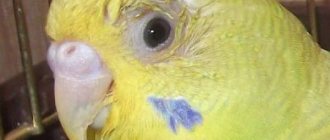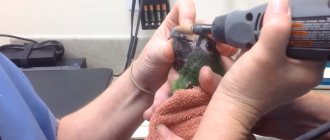Inflammatory eye diseases
develop as a result of a specific reaction of the body to damage or the introduction of a foreign agent, and constitute the main part of all ophthalmological pathology. If left untreated, these diseases can lead to serious complications: clouding of the cornea, decreased vision, and spread of the process to adjacent tissues and organs.
The inflammatory process can occur in any part of the eyeball: cornea, conjunctiva, sclera, iris, choroid. Most often in the practice of an ophthalmologist, pathology of the anterior part of the eye occurs.
Conjunctivitis
The conjunctiva is the outer membrane covering the eyeball and eyelids, which is the first to come into contact with harmful environmental influences. Therefore, conjunctivitis accounts for 60% of all inflammatory diseases.
According to the course, acute and chronic variants of the disease are distinguished. Main symptoms of eye diseases
in the acute stage: redness of the conjunctiva, intense lacrimation, a feeling of “sand in the eyes,” intolerance to bright light, pain and burning. In the chronic form, bilateral inflammation always develops.
Keratitis
This disease occurs when the cornea (the transparent membrane at the front of the eye) is damaged. A distinctive feature of the pathology is a sharp decrease in the size of the palpebral fissure up to complete closure of the eyelids, which occurs due to irritation of nerve receptors. Other signs: increased sensitivity to light, lacrimation, intense pain, foreign body sensation. With a long course of the disease, ulceration of the cornea is observed.
Barley (hordeolum)
The disease is an acute inflammation of the sebaceous gland or hair follicle of the eyelid. The pathology has a characteristic clinical picture: first there is swelling and redness of the eyelid area, which may be accompanied by itching, burning, and a sensation of a foreign body. After a few days, the swelling thickens and a yellow dot appears in its center, which indicates the maturation of the abscess. Then the barley is opened with the release of pus. In severe cases of the disease, an extensive abscess forms with a tendency to spread to surrounding tissues.
Blepharitis
This eye disease is characterized by chronic inflammation of the edges of the eyelids of various etiologies. Local symptoms of the pathology: hyperemia and swelling of the eyelids, pain and burning in the eyeball, decreased clarity of vision. There may also be mucous or purulent discharge, which leads to sticking of the eyelids and the inability to open the eyes. With scaly blepharitis, intense fine-plate peeling of the skin of the eyelid is noted. With ulcerative blepharitis, superficial skin defects are formed, accompanied by inflammation of the hair follicles of the eyelashes.
Uveitis
Depending on the location of the lesion, anterior uveitis (iridocyclitis) and posterior uveitis (chorioretinitis) are distinguished. With iridocyclitis, pain and burning, intense lacrimation, redness, and decreased visual acuity are noted. Chorioretinitis is characterized by scant clinical symptoms. The disease occurs in a chronic form, the first signs are dull pain inside the eyeball, “fog” before the eyes, distortion of the shape of surrounding objects. Without treatment, the disease can result in complete loss of vision.
Causes of inflammatory eye diseases:
- Inflammation caused by an infection, the causative agent of which can be a bacterium, virus, or fungus. Most often, the infection occurs during swimming in dirty water, through contact with dirty hands, during hypothermia, and with various diseases associated with ENT organs. Many infectious diseases, such as conjunctivitis, can be transmitted through contact with a sick person.
- Ingress of aggressive substances such as alkali, acid, dust.
- Chronic and allergic human diseases, which are accompanied by inflammatory processes of the eye.
- Eye injury.
Common eye diseases in parrots
Regardless of the species, it is necessary to carefully monitor the health of the parrot.
Eyes are not only the “mirror of the soul”, but also an indicator of the pet’s overall health. Conjunctivitis
The most common eye disease, there are many causes for its occurrence. The fact is that the parrot has a vulnerable mucous membrane. Any contact with dust or tobacco smoke can lead to inflammation. The disease is manifested by the following symptoms: redness, swelling, tearing, frequent blinking, and pus may accumulate in the corners of the eyes.
Drafts are also very dangerous for birds. In parrots, this is one of the most common causes of eye inflammation. Also, the inflammatory process can begin when the eye dries out. Therefore, it is important to find a suitable place in the house for the bird’s cage: you do not need to keep it next to the radiator or in front of an open window.
With conjunctivitis, especially purulent, the bird constantly closes its eye, squints, a crust forms on the eye, the parrot tries to clean the eye with its paw, rubs against the bars of the cage, perch or other objects, which can lead to additional injury. The eye turns red and waters. As soon as you notice strange behavior in your pet, consult a doctor.
Eye inflammation can also be caused by various bacterial infections. Sometimes the problem lies in a lack of vitamin A in the bird's diet.
Foreign body in pet's eye
You and I have hands that we can use to remove specks from our eyes; a parrot's wings are unlikely to help him with this. So our feathered friend tries to pull out a speck or other object that has gotten into his eye by rubbing against everything that is in his cage: rods, a food stick, a drinking bowl or something else. Such manipulations lead to the bird causing itself much more harm than the mote itself. The eye becomes red and suppurated, and the eyelid becomes swollen and inflamed. If the bird is behaving strangely, do not delay visiting the doctor. The drug Reparin-Helper® is suitable as first aid. It regulates the inflammatory process, relieves pain and reduces the risk of complications.
Cystosis of the conjunctiva (mucous membrane of the eye)
This disease is often confused with conjunctivitis. They can be distinguished by the spread of inflammation. With cystosis, only the lower eyelid becomes inflamed, and with conjunctivitis, the entire eye is inflamed. Only surgical intervention can help in this situation. In any case, only a doctor can make a diagnosis. If there are any alarming signals, contact a specialist.
Abscess of the eyelid
Another disease with similar symptoms. It affects the lower eyelid, which does not swell, but droops. The nature of this disease is viral, and the method of treatment is surgery.
What to do if symptoms appear
- Do not self-medicate under any circumstances.
- At the first symptoms, consultation with an ophthalmologist is necessary.
- Initiate necessary therapy in a timely manner
- Maintain hygiene
If the inflammatory process appears only in one eye , without timely treatment the process can spread to the healthy eye.
It is important to promptly identify inflammatory processes in children; we must remember that children rarely complain of visual discomfort.
Treatment of conjunctivitis in children
Obviously, the treatment of conjunctivitis is determined by the factors that caused it. It is the prerogative of the doctor to establish these reasons, and in this case there is no need to speculate, for example, “The year before last there was diathesis, which means allergic conjunctivitis.” As first aid, it is allowed to wash the eyes with decoctions with aseptic and soothing properties (chamomile, sage, regular tea leaves), special solutions of furatsilin or boric acid.
Any eye bandages are contraindicated: if the conjunctivitis is bacterial, the bandage will contribute to the accumulation of mucopurulent secretions infested with the pathogen, which then dry out, stick the eyelids together, cause additional irritation, and infect the second eye (if the inflammation began in one). You should remember the importance of following asepsis rules, and provide the child with individual bed linen, towels, etc. The pipette, if needed, should have rounded edges to avoid even accidental injury.
Further treatment will be prescribed by the doctor, as they say, according to indications.
Prices for diagnostic services and consultation with an ophthalmologist
| Type of medical service | Service price in rubles |
| Consultation with an ophthalmologist for eye disease in an adult | 500 |
| Consultation with an ophthalmologist for eye diseases in children over 3 years of age | 700 |
| Biomicroscopy of eye structures | 400 |
| Skiascopy | 400 |
| Direct ophthalmoscopy of the fundus with a narrow pupil | 400 |
| Direct ophthalmoscopy with a wide pupil (under mydriasis) | 400 |
| Indirect ophthalmoscopy with a binocular ophthalmoscope | 500 |
| Diaphanoscopy of the eye and its appendages | 500 |
| Gonioscopy | 500 |
| Ophthalmotonometry according to Maklakov | 250 |
| Daily tonometry – (2 times a day, 3 days) | 1000 |
| Non-contact ophthalmotonometry | 300 |
| Elastometry | 300 |
| Shortened tonography according to Nesterov | 500 |
| Colored nasolacrimal test | 200 |
| Schirmer test | 200 |
| Eyelid massage (1 procedure, 2 eyelids) | 300 |
| Collection of material and examination for demodex | 1000 |
| Taking a smear for flora and sensitivity to antibiotics from the conjunctiva | 1000 |
| Probing and rinsing of lacrimal canaliculi | 1000 |
| Removing a foreign body from the cornea of the eye | 1000 |
| Injecting medications into a chalazion | 1000 |
| Barley opening | 1000 |
Symptoms of conjunctivitis in a child
The main complaints, common to all ages and types of conjunctivitis, include redness and characteristic clouding of the eyes, noticeable redness of the edges of the eyelids, increased flow of tears (in some cases with mucopurulent exudate), burning, stinging, itching, foreign body sensation and other symptoms. Depending on the damaging factor and the type of course, the severity of symptoms varies from quite tolerable to painful. In terms of age, however, it should be noted that for the youngest patients there are simply no “tolerable” symptoms; in other words, at the first signs of inflammation of the conjunctiva, measures should be timely and, most importantly, adequate.
Considering that conjunctivitis is not at all as harmless as it often seems to adults, and in some cases is fraught with dangerous complications, the most adequate reaction of parents is to contact an ophthalmologist, the least - an attempt at amateur drug therapy for childhood conjunctivitis.
Prevention
- Regular hand washing. Many people have a habit of rubbing their eyes, so it is better to eliminate the risk of infection on the surface of the cornea in advance.
- Wearing sunglasses in sunny weather. They will protect the mucous membrane from exposure to ultraviolet radiation.
- Using computer glasses. They relieve eye strain when working at a computer.
- Regular warm-up. Improves eye well-being and helps them relax.
- Minimal contact with allergens.
Treatment for itchy eyes
If itching occurs, you can apply cold or warm compresses. They soften hard crusts on the eyelids and reduce the appearance of swelling. You can only touch your eyes with pre-washed hands!
The doctor selects special drops and ointments to eliminate itching and other symptoms. They moisturize the mucous membrane, reduce its irritation and inflammation. The ointments may contain a broad-spectrum antibiotic that is effective in fighting infection. It relieves inflammation and irritation. Eye drops, such as Gilan, work well.
If the discomfort is caused by a systemic disease, the doctor determines how to get rid of itchy eyes with the help of drug therapy and prescribes medications to relieve symptoms.
Eye drops
A good choice is eye drops that are aimed at getting rid of the main signs of ophthalmic diseases.
Drops are suitable for the treatment of acute and chronic inflammation, prevention of eye diseases. They relieve irritation, eliminate itching and redness. May have antiallergic and anti-inflammatory effects. They are often used to improve the condition of the eyes after injuries, surgery, and infectious pathologies.
Pay attention to Gilan drops. They contain hyaluronic acid, which has a long-lasting, pronounced moisturizing effect. It facilitates the patient’s condition when he frequently spends time behind a monitor screen or while driving. The drug can be used by children and pregnant women.
The use of antibiotics is permissible only after a doctor’s prescription! Long-term uncontrolled use of the compounds can lead to lens clouding, glaucoma or dry eye syndrome. Before starting treatment, it is necessary to find out why the eye itches.
How to eliminate itching yourself?
First of all, you should determine why the skin around the eyes and eyelids constantly itch. If the cause is not related to serious illnesses, you can use home treatment methods.
What is recommended to do if there is severe itching in the eyes?
First, give your eyes a rest. To do this, you need to remove your lenses or glasses, wash off your makeup, and turn off your computer and TV. You can cover your eyelids with your palms for a few minutes and look at a distant point. If your eyes are very itchy, it is advisable to rinse them with boiled water or saline solution, strong tea or a decoction of medicinal herbs. It is better to keep drops on hand to moisturize the mucous membranes, which can be bought at any pharmacy. If the itching is caused by allergies, antihistamines will help relieve the condition. To speed up the process, you can use eye drops that moisturize the mucous membrane and relieve irritation.
A few simple exercises
- If you feel tired, close your eyes tightly for 3 seconds.
- Blink frequently for 30 seconds.
- Roll your eyes in a circle for 20 seconds.
- Close your eyes and cover them tightly with your palms for 5 seconds.
Diagnostics
A pediatric ophthalmologist examines the child, collects anamnesis and complaints. Concomitant diseases are also identified or rejected, and laboratory tests are carried out.
Biomicroscopy of the eye is used to determine visual acuity. The first technology makes it possible to assess the condition of the tear film, the edges of the eyelids, the eyeball, etc. Refraction and accommodation are examined, on the basis of which the following can be identified: myopia, astigmatism, etc.
To confirm or deny the presence of Demodex mites, eyelash microscopy is performed.
If there is a suspicion of the infectious nature of the disease, a BAC culture of a smear from the conjunctiva is performed.
To identify helminths, a stool test is prescribed, and in case of an allergic course of the disease, allergy tests are performed.
When blepharitis exists for a long time and causes hypertrophy of the eyelid margins, the doctor prescribes an examination to exclude various forms of cancer, carried out by biopsy followed by histological examination of the biomaterial.
Associated symptoms
Itching can manifest itself in different forms. Some patients' eyes itch a little, others experience a strong burning sensation, which is accompanied by pain, discomfort and other characteristic symptoms.
Itching with redness
In almost all cases, itching in the eyes is accompanied by redness of the surface of the whites or eyelids. The appearance of redness can inform the doctor about the presence of an allergic reaction or the development of an ophthalmological disease.
When itching with redness of the cornea, the patient is usually diagnosed with conjunctivitis. The disease is accompanied by increased sensitivity to light, blurred vision, and a feeling of sand in the eyes. The skin around the eyes begins to turn red. Mucous discharge appears on the eyelids, which dries out and remains in the form of crusts.
With allergic conjunctivitis, the mucous membrane turns red and a runny nose may develop. Symptoms occur when allergens enter the body.
Itching with swelling
Swelling around the eyes is a common symptom of an allergic reaction. For example, if itching and swelling are observed frequently and are caused by certain foods, the patient needs to completely reconsider the diet.
Itching with peeling
Peeling of the skin can inform the doctor that the patient has demodicosis. This is a disease in which the sebaceous glands are affected by mites.
The skin turns red around the eyes, around the lips, and on the chin. Symptoms become more pronounced when working at a computer.
Itching in the eyes and ears
If the eyes itch or there is discomfort in the ears, the patient needs to be checked for the presence of microscopic mites.
About 80% of people encounter them. Ticks spend most of their time in passive mode and do not bother humans. Their activity begins when the immune system is weakened and other diseases appear.
Itching with dryness
Dryness of the mucous membrane may indicate dry eye syndrome. It is usually accompanied by itching, burning, fear of light and rapid fatigue of the patient. Sometimes there are crusts in the corner, slight redness of the conjunctiva. The eye begins to hurt.
The feeling of dryness becomes stronger in sunny or windy weather, weakens in humid and warm air.
Itching with runny nose
With a runny nose, redness of the mucous membrane is common. Sometimes there is discharge from the eyes: at first it is transparent, gradually pus is mixed with it. Swelling of the nasal mucosa with dark circles around the eyes indicates the presence of infection.
Itching in the ears, eyes, throat and palate is a symptom of inflammation of the mucous membranes or allergic rhinitis.
Severe itching
Very severe itching in the eyes is caused by various ophthalmological diseases, such as keratoconjunctivitis. It affects the conjunctiva of the eyelid and the eyeball. It is accompanied by hard and dense growths on the eyelids, most often on the upper ones. In addition, photophobia, lacrimation, and viscous discharge may be present.
With pathology of the conjunctiva, the cornea becomes gray and hypertrophied, pain appears due to damage to the epithelium.











